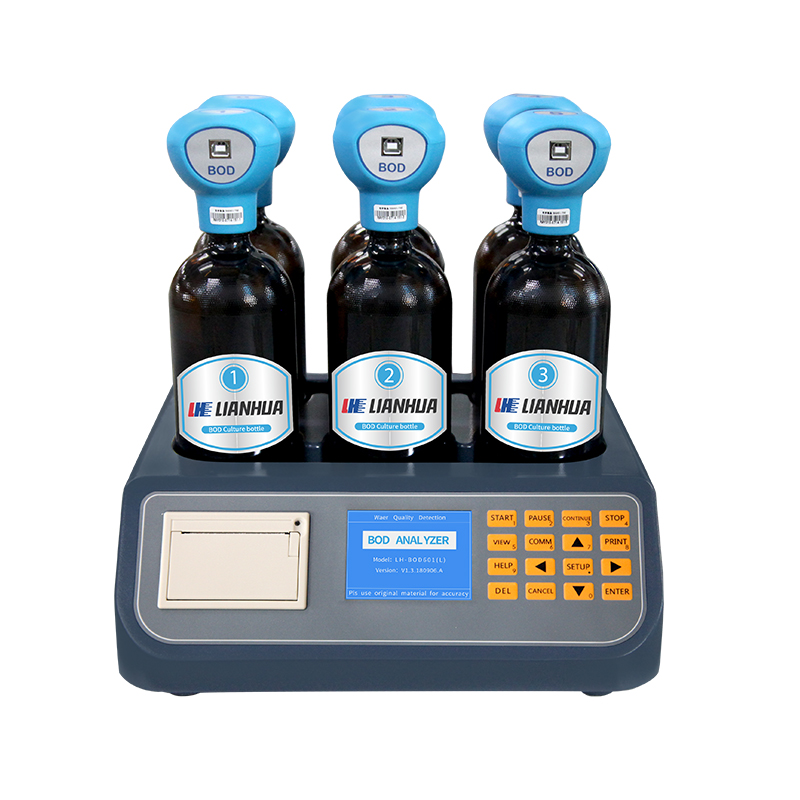What should you pay attention to when using the BOD analyzer:
1. Preparation before experiment
1. Turn on the power supply of the biochemical incubator 8 hours before the experiment, and control the temperature to operate normally at 20°C.
2. Put the experimental dilution water, inoculation water and inoculation dilution water into the incubator and keep them at constant temperature for later use.
2. Water sample pretreatment
1. When the pH value of the water sample is not between 6.5 and 7.5; first conduct a separate test to determine the required volume of hydrochloric acid (5.10) or sodium hydroxide solution (5.9), and then neutralize the sample, regardless of whether there is precipitation. When the acidity or alkalinity of the water sample is very high, high-concentration alkali or acid can be used for neutralization, ensuring that the amount is not less than 0.5% of the volume of the water sample.
2. For water samples containing a small amount of free chlorine, the free chlorine will generally disappear after being left for 1-2 hours. For water samples where free chlorine cannot disappear within a short period of time, an appropriate amount of sodium sulfite solution can be added to remove free chlorine.
3. Water samples collected from water bodies with lower water temperatures or eutrophic lakes should be rapidly heated to about 20°C to drive out supersaturated dissolved oxygen in the water samples. Otherwise, the analysis results will be low.
When taking samples from water bodies with higher water temperatures or wastewater discharge outlets, they should be quickly cooled to about 20°C, otherwise the analysis results will be high.
4. If the water sample to be tested has no microorganisms or insufficient microbial activity, the sample must be inoculated. Such as the following types of industrial wastewater:
a. Industrial wastewater that has not been biochemically treated;
b. High temperature and high pressure or sterilized wastewater, special attention should be paid to wastewater from the food processing industry and domestic sewage from hospitals;
c. Strongly acidic and alkaline industrial wastewater;
d. Industrial wastewater with high BOD5 value;
e. Industrial wastewater containing toxic substances such as copper, zinc, lead, arsenic, cadmium, chromium, cyanide, etc.
The above industrial wastewater needs to be treated with sufficient microorganisms. The sources of microorganisms are as follows:
(1) The supernatant of untreated fresh domestic sewage placed at 20°C for 24 to 36 hours;
(2) The liquid obtained by filtering the sample through filter paper after the previous test is completed. This liquid can be stored at 20℃ for one month;
(3) Effluent from sewage treatment plants;
(4) River or lake water containing urban sewage;
(5) The bacterial strains provided with the instrument. Weigh 0.2g of bacterial strain, pour it into 100ml of pure water, stir continuously until the lumps are dispersed, put it into an incubator at 20°C and let it stand for 24-48 hours, then take the supernatant.
Post time: Jan-24-2024





